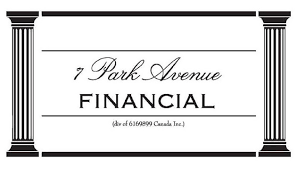|
Asset Finance Solutions in Canada : Asset Based Lending Rates Explained
Turn Your Business Financing Into a Successful Growth Strategy
YOUR COMPANY IS LOOKING FOR BUSINESS FINANCE SOLUTIONS!
ASSET BASED LENDING SECURED LOANS IN CANADA
You've arrived at the right address! Welcome to 7 Park Avenue Financial
Financing & Cash flow are the biggest issues facing businesses today
ARE YOU UNAWARE OR DISSATISFIED WITH YOUR CURRENT BUSINESS FINANCING OPTIONS?
CALL NOW - DIRECT LINE - 416 319 5769 - Let's talk or arrange a meeting to discuss your needs
EMAIL - sprokop@7parkavenuefinancial.com

ASSET BACKED FINANCE BUSINESS SOLUTIONS IN CANADA
Asset finance solutions are becoming one of the most popular solutions to business financing in Canada. Let's look at asset based lending rates in Canada and the types of solutions that might be available for your firm in comparison to commercial banking lines of credit
Let's dig in on asset finance solutions and alternative lending competitive financing solutions.
Asset finance can mean different things to different business folks. Asset based lines of credit are really the essence of our topic and discussion. Simply speaking it's the financing that your firm secures, on a revolving of operating basis, and it's collateralized by receivables and inventory.
But wait, we should also add that in many cases your firm's equipment and unencumbered fixed assets are also eligible for operating financing. Most business owners realize that Canadian chartered banks generally do not allow you to monetize or borrow daily against equipment and fixed assets such as real estate. Asset finance, i.e. our asset based line of credit does just that? That is the 'ABL' difference.
HOW DOES ASSET BASED LENDING IN CANADA WORK?
Cash flow needs are required by every size of business - Those financing needs can be in the form of loans and business lines of credit - allowing the company to meet the demands of day-to-day operations and growth objectives. Growing businesses are required to invest in receivables, inventories, equipment, etc.
In many instances a company is unable to confirm that it has the historical and present cash flows to cover any business loans - that is where the assets of the business can be used as collateral - i.e. asset-based finance.
Asset-based loans focus on the type and actual market values of the business assets that will be used as security. Liquidity in assets is the focus of the asset-based lender. More liquid assets such as receivables have a higher loan-to-value possibility as they are able to be converted into cash relatively quickly versus capital assets on the balance sheet.
Book values have little relevance in ABL lending. The cost of financing in asset-backed financing varies based on a number of key factors such as facility size, the credit quality of the business, collateral values, industry dynamics, time in business, etc.
WHAT ARE THE BENEFITS AND ADVANTAGES OF ASSET-BASED LENDING IN CANADA
In almost all cases the ability to more quickly secured asset-based financing compares favourably to the time involved in establishing traditional bank financing. Canadian banks focus on a number of covenants and ratios required to maintain ongoing bank credit facilities.
ABL on the other hand is often termed as ' covenant light ' given the focus on assets. In certain cases, the interest rates on ABL loans can compare to bank financing but this typically will involve a very large facility in the 10M plus range.
Companies that have asset value in their balance sheets are prime candidates for ABL lending. The ability to leverage assets into cash inflows and working capital is huge when the business cannot access cash flow financing.
Many companies have ' bulge requirements ' and have seasonal and cyclical aspects to their industry. Abl lines fluctuate and can be increased in an extremely short period of time.
Business acquisition in Canada can also be facilitated by an asset loan structure, allowing for higher leverage. Companies that are in the process of restructuring often utilize ABL loans as a temporary measure on the road back to more traditional financing.
It is almost a guarantee that any company utilizing an ASSET-BASED FINANCING structure will have access to more credit based on higher loan to values drawdowns on business assets. Asset-based lending for real estate is also available, typically under a bridge loan structure. That flexibility provided in day-to-day operations or strategic growth initiatives is welcomed by many firms utilizing this non-bank method of financing.
HOW ARE BORROWING AMOUNTS ESTABLISHED IN ASSET-BASED LENDING SOLUTIONS?
The borrowing base is a key concept in asset financing. The asset-based lender will establish a formula based on the values of key business assets such as accounts receivable, inventory, and fixed assets. As the company reports monthly values of those assets the facility fluctuates relative to the amount that can be drawn down. As a common example receivables are typically margined in the 85-90% range.
It is obvious that as the company grows in sales and current assets the borrowing base increases.
Periodic reviews of monthly financials are key to the borrowing base calculation. On very large or more complex deals a financial audit or company visit may be required.
WHY ASSET-BASED LENDING HAS BECOME SO POPULAR
It is an alternative
It is more liquid
It has fewer rules
That's what an asset-based line of credit is all about. We tell our clients we haven't seen one case where a customer's line of credit didn't improve significantly from a viewpoint of borrowing power, with fewer rules.
What are those 'rules' we are referring to? Let's put it this way, you couldn't measure our respect for the Canadian banking system in Canada - it's immense. But the reality is that typically small and medium-sized businesses in Canada - (let's define that as say anything from between 1-30 Million in revenue) are challenged when it comes to operating lines of credit.
The main focus in the growth of asset-backed business finance solutions in Canada has been that its an alternative to traditional bank cash flow loans. Many businesses that are experiencing challenges but who have assets that have the ability to address industry challenges around seasonality, inability to maintain bank covenants, etc can benefit in challenging economic times.
How do asset finance solutions remove the liquidity challenge your firm faces? They monetize assets, allowing you to borrow against them on a daily basis. Very little if any emphasis is placed on balance sheet ratios, profitability (it helps and is nice to be profitable though!) personal guarantees, or outside collateral.
UNDERSTANDING THE COST OF ASSET BASED FINANCE
Are asset based lending rates different from bank credit facilities? In some cases they actually are the same or better from a viewpoint of a pure rate discussion, where they differ is if your firm's facility size is under the 3 Million dollar range from a viewpoint of A/R and inventory balances. At this point, you can expect to pay a premium compared to a bank line of credit. Asset based lending banks exist in Canada but they typically focus on very large transactions.
Is the 'premium' on asset-based lending rates worth it to your firm? It absolutely isn't worth it, IF... and that’s a big IF... you don't place value on increased borrowing power, the ability to borrow against your assets as you grow, as well as the increased flexibility around the terms and conditions of your facility.
That's a big IF..! And we think clients get our point when we say that any premium you might pay is easily justified.
Are asset-based lines of credit becoming more popular in Canada - absolutely! Will they cost you more - probably, but not always - depending on the overall size and quality of the facility you require?
KEY TAKEAWAYS
ABL is all about collateral
More liquid assets on the balance sheet provide additional borrowing power versus capital assets, commercial real estate, etc
Day-to-day liquidity needs are the most common use of asset-based facilities such as lines of credit
Business Acquisitions, a management buyout or leverage financing can be contemplated under the ABL structure
Refinancing a business/recapitalization is a common use of the ABL structure
CONCLUSION
Are the advantages of increased liquidity important for you - then that's for you to decide! Speak to 7 Park Avenue Financial, a trusted, credible and experienced Canadian business financing advisor to learn more about asset based loan and finance solutions in Canada.
FAQ: FREQUENTLY ASKED QUESTIONS MORE INFORMATION PEOPLE ALSO ASK
What is asset-based lending?
Asset based lending is business credit in the form of a line of credit or term loan secured by balance sheet collateral such as inventory, accounts receivable and fixed assets.
What are the types of asset-based loans?
Different types of asset loan solutions include receivables financing/factoring, inventory finance , capital asset financing and real estate funding solutions. Assets are pledged as collateral for loans. Line of credit facilities in asset finance provides working capital or term loan structures
Click here for the business finance track record of 7 Park Avenue Financial

' Canadian Business Financing With The Intelligent Use Of Experience '
STAN PROKOP
7 Park Avenue Financial/Copyright/2024

Stan Prokop is the founder of 7 Park Avenue Financial and a recognized expert on Canadian Business Financing. Since 2004 Stan has helped hundreds of small, medium and large organizations achieve the financing they need to survive and grow. He has decades of credit and lending experience working for firms such as Hewlett Packard / Cable & Wireless / Ashland Oil
|